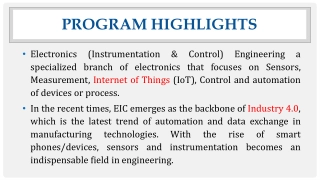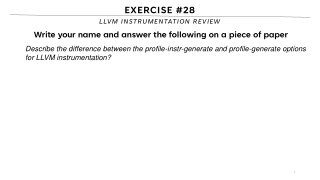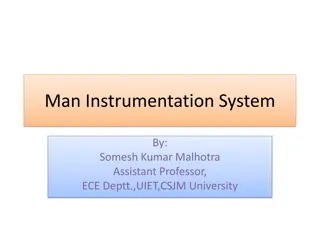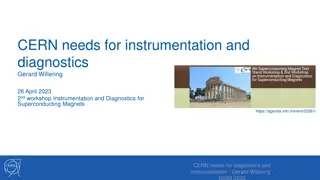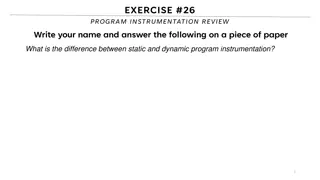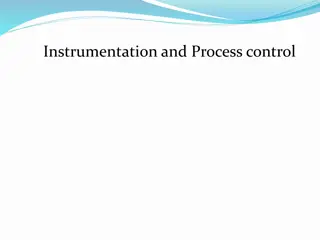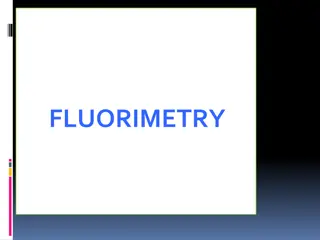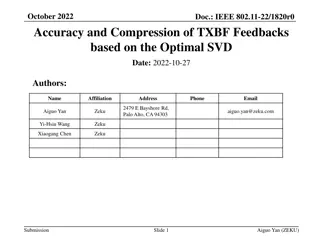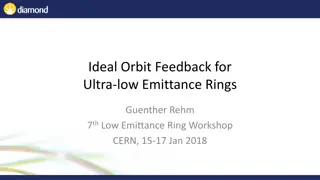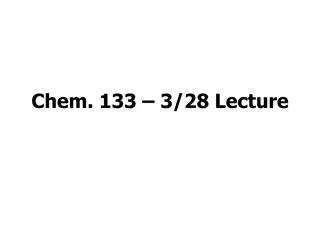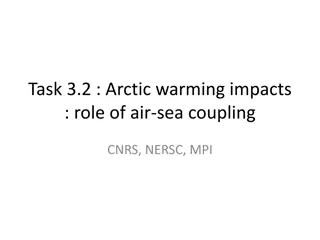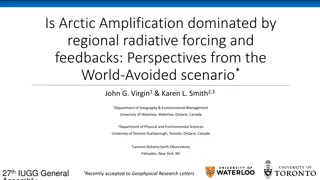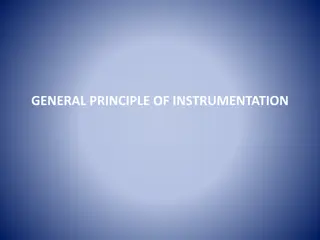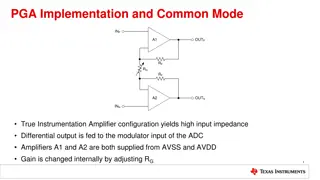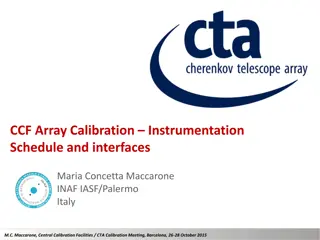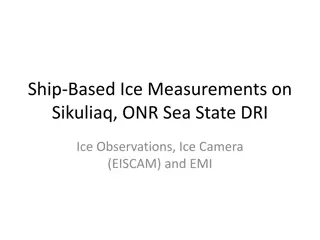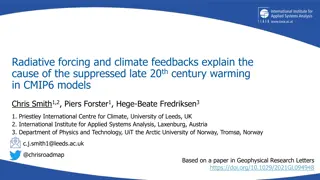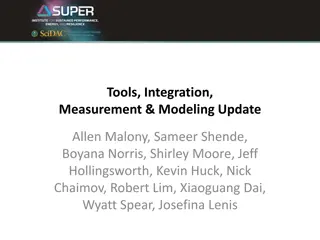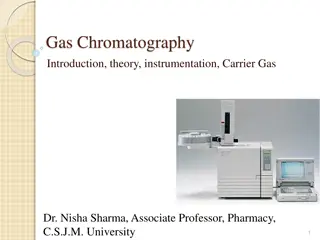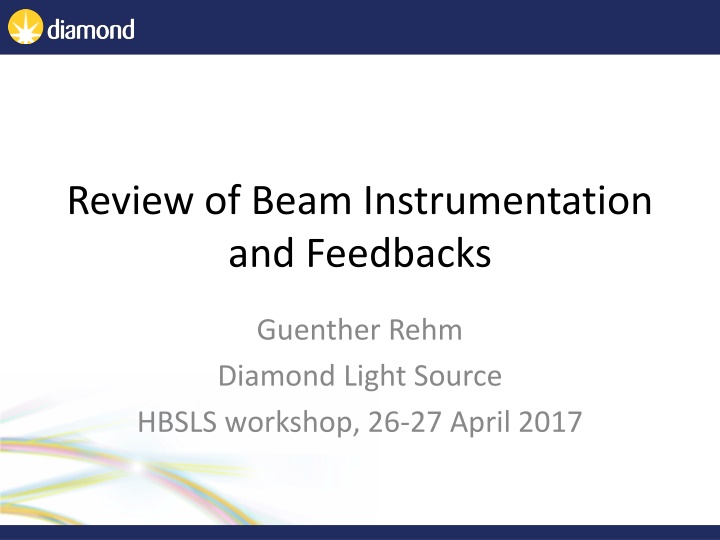
Beam Instrumentation and Feedbacks Review at Diamond Light Source Workshop
Explore the impact of HB-SLS on beam instrumentation and feedback systems at the HBSLS workshop in April 2017. The review covers topics such as beam position monitors, orbit feedback, bunch-by-bunch monitors, tune monitors, photon beam position monitors, and beam profile measurement.
Download Presentation

Please find below an Image/Link to download the presentation.
The content on the website is provided AS IS for your information and personal use only. It may not be sold, licensed, or shared on other websites without obtaining consent from the author. If you encounter any issues during the download, it is possible that the publisher has removed the file from their server.
You are allowed to download the files provided on this website for personal or commercial use, subject to the condition that they are used lawfully. All files are the property of their respective owners.
The content on the website is provided AS IS for your information and personal use only. It may not be sold, licensed, or shared on other websites without obtaining consent from the author.
E N D
Presentation Transcript
Review of Beam Instrumentation and Feedbacks Guenther Rehm Diamond Light Source HBSLS workshop, 26-27 April 2017
Outline Impact of HB-SLS on Instrumentation Beam Position Monitors and Orbit Feedback Bunch-by-Bunch Monitors and Feedbacks Tune Monitors and Feedbacks Photon Beam Position Monitors and Feedback Beam Profile Measurement and Feedback Summary Review of Beam Instrumentation and Feedbacks, G Rehm, HBSLS workshop, 26-27 April 2017 2
Evolution of SLS once more APS-U(6) WEPOW020, IPAC2016 Review of Beam Instrumentation and Feedbacks, G Rehm, HBSLS workshop, 26-27 April 2017 3
HB-SLS relative to established SLS Horizontally lower emittance ~60-300pm Beam sizes shrinks to ~7-17um (1m beta) Vertically mostly stays at ~8pm Beam size stays at ~3 um (1m beta) Smaller beam pipes Smaller BPM buttons (less signal), but closer to the beam (more signal) TUPF14, IBIC2014 Higher impedance, potential NEC coating, more driving terms for instabilities? WEPHA002, IPAC2015 More advanced optical lattice Higher requirements on tune stability TUPWA013, IPAC2015 Smaller dynamic aperture TUPJE063, IPAC2015 General advances on beamlines Faster data collection demands stable beam to higher frequencies DOI: 10.1107/S2059798316012304 Break down the wall between source and sample with integrated approach to stability DOI: 10.1107/S2053273315097168 Review of Beam Instrumentation and Feedbacks, G Rehm, HBSLS workshop, 26-27 April 2017 4
Beam Position Monitors Worldwide population dominated by single commercial supplier Multiplex switching is the ruling favourite DIPAC03,IT02 Evident short and long term stability, and low dynamic compression (aka fill pattern dependence ) MOD1A01, DIPAC07 Turn-by-turn data possible, with some complications THPE087, IPAC2010 Several recent independent in-house developed approaches: NSLS-II design WECYB2, IBIC2014 and ALS follow up (with pilot tone, no yet published) LNLS approach Open Hardware (different kind of switching) WECYB3, IBIC2014 Elettra trialling a pilot tone BPM TUPG02, IBIC2016 Review of Beam Instrumentation and Feedbacks, G Rehm, HBSLS workshop, 26-27 April 2017 5
Orbit Feedback Until recently typically done in-house to cope with complexity and variety of interfaces. Implemented in DSP, CPU and FPGA MOOC01,DIPAC09 Recently also commercially supplied in FGPA: TPS WEPG07,IPAC2016, MAX-IV, Solaris TUPRI078,IPAC2014 Controller is typically PI, or better IMC MOPGF175, ICALEPCS2015, sometimes used with inverse matrix regularisation MOC3O04, ICALEPCS2015 For BPM noise evaluation the bandwidth of the complementary sensitivity (DC to 100-300Hz) is most relevant Good comparison of FB performance remains difficult due to lack/disagreement of required tools on all installations Review of Beam Instrumentation and Feedbacks, G Rehm, HBSLS workshop, 26-27 April 2017 6
Comparison of Orbit Stability DOI:10.1088/1742-6596/425/4/042001 Review of Beam Instrumentation and Feedbacks, G Rehm, HBSLS workshop, 26-27 April 2017 7
Corrector Spectra at DLS Review of Beam Instrumentation and Feedbacks, G Rehm, HBSLS workshop, 26-27 April 2017 8
Bunch-by-Bunch Monitors and FB Worldwide population nearly dominated by a single commercial supplier WEPD27, IBIC2014 WEPG02, IBIC2016 Fundamental feedback principle still the same as 25 years ago page 2352, PAC93 Improvements concentrate on implementation Hardware: custom built integrated page 2649, EPAC04 or COTS components modularised TUCL03, IBIC2016 Firmware/Software: More upstream processing as required to make full use of high data rate (500MS/s = 1GByte/s) Review of Beam Instrumentation and Feedbacks, G Rehm, HBSLS workshop, 26-27 April 2017 9
BbB Feedback Control System RF clock History buffer I/Q or X/Y RF Modulator where req d A/D Digital Signal Processing D/A Converter converter Frontend FPGA based Feedback Processor Power Amplifier A/D and D/A run synchronous with bunches, every bunch measured RF frontend can be shared between transverse and longitudinal Different feedback parameters/actions for individual bunches possible Review of Beam Instrumentation and Feedbacks, G Rehm, HBSLS workshop, 26-27 April 2017 10
Exciting Longitudinal Modes Each mode is associated with one frequency: Program sequencer to step through =0 935, excite 4800 turns, measure 24000 turns, 25e9 bunches measured Average I/Q for two synchrotron periods MOPGF097, ICALEPCS2015 TUCL03, IBIC2016 Review of Beam Instrumentation and Feedbacks, G Rehm, HBSLS workshop, 26-27 April 2017 11
Longitudinal Damping Rates Diamond SR / 300mA / 900 bunches Synchrotron radiation damping TUCL03, IBIC2016 Review of Beam Instrumentation and Feedbacks, G Rehm, HBSLS workshop, 26-27 April 2017 12
Tune Monitors Betatron and Synchrotron Tune monitoring often comes for free integrated with the BbB system Typically integrated into control system MOPGF097, ICALEPCS2015 Some people prefer it old style : RF spectrum analyser with tracking generator connected to amplifier/strip line TH5RFP010, PAC09 Assess turn-by-turn data after kick (conveniently available due to frequent non-closure of injection kickers and top-up) MOPF26, IBIC2013 Typically requires specific integration into control system, tracking max peak might not be good enough! Review of Beam Instrumentation and Feedbacks, G Rehm, HBSLS workshop, 26-27 April 2017 13
Why Tune Feedback? Tune islands for injection efficiency and liftime versus betatron tunes become less comfortable: Land sinks (Lifetime/Injection drops permanently due to upgrades , safety limits remain however) Smaller land with steeper slopes Space required for exercises (tune shift with injection) TUPRI082,IPAC2014 Review of Beam Instrumentation and Feedbacks, G Rehm, HBSLS workshop, 26-27 April 2017 14
Photon beam position and FB Photon / X-ray beam position measurement has lots of variations: In front ends Tungsten vanes DOI: 10.1107/S0909049597017068WEPD22, IBIC2014 Gold plated Diamond vanes page 539, PAC01 Diamond photo conductor vanes MOPC10,IBIC2013 Residual Gas MOCNB03,BIW2010 Grazing incidence MOPG17, IBIC2016 On beam lines, more types than could be listed here Fluorescent screens (P43, YAG:Ce, Diamond), scatter foils with quadrant diodes, split ionisation chambers, Silicon devices Hot topic recently: Single crystal CVD diamond quadrant detector DOI: 10.1107/S1600577514016191 DOI: 10.1063/1.4952845 DOI: 10.1107/S090904959801509X DOI: 10.1016/j.diamond.2006.11.081 DOI: 10.1107/S0909049510031420 Review of Beam Instrumentation and Feedbacks, G Rehm, HBSLS workshop, 26-27 April 2017 15
X-rays go straight! Electron beam divergence RMS is 2.3 rad 12keV photon beam divergence RMS is ~10 rad This is rather sophisticated instrumentation Courtesy Chris Bloomer, DLS Review of Beam Instrumentation and Feedbacks, G Rehm, HBSLS workshop, 26-27 April 2017 16
Photon beam feedback Not in general use so today: Frontend XBPMs Slow software loop back to change golden orbit WECI001, ICALEPCS2001 WEPEB047, IPAC2010 Integration with FOFB at full rate MOPA39,IBIC2012 Beamline XBPMs DCM/mirror control in optimum seeking DOI: 10.1088/1742-6596/425/4/042010 Local mirror feedback Source steering DOI: 10.1109/TNS.1983.4332770 Review of Beam Instrumentation and Feedbacks, G Rehm, HBSLS workshop, 26-27 April 2017 17
Beam profile and FB Imaging techniques Direct projection TUPB08, DIPAC07 X-ray pinhole camera DOI: 10.1103/PhysRevSTAB.13.02280 X-ray coded aperture TUPB025, IBIC2015 Fresnel zone plates THOBFI02, EPAC06 Compound refractive lenses WEWPF12, IBIC2013 Indirect beam size measurement: Young s slit interferometer, with variations WEIC02, WECC02, IBIC2012 X-ray diffraction TUCZB1, IBIC2014 Pi-polarisation method DOI: 10.1016/j.nima.2008.02.095 Most importantly: All these measure beamsize, emittance is calculated using knowledge of Twiss parameters only! Feedback used if emittance coupling changes start to matter MOPEA071, IPAC2013 DOI: 10.1103/PhysRevSTAB.14.034002 Review of Beam Instrumentation and Feedbacks, G Rehm, HBSLS workshop, 26-27 April 2017 18
Promising Profiles X-ray diffraction TUCZB1, IBIC2014 Pi-polarisation THPME169, IPAC2014 Review of Beam Instrumentation and Feedbacks, G Rehm, HBSLS workshop, 26-27 April 2017 19
Summary BPMs commercially available with sufficient performance, alternatives increasing FOFB still mainly in-house developed, remains best for ultimate performance Bunch-by-Bunch feedback/monitor commercially available, alternatives still interesting Tune Monitors turn into feedback loops Photon beam control might have a revival Profile monitors see most new techniques, feedback application to be upcoming Final Question: Will every SLS soon be running as much on AutoPilot as commercial airliners? Review of Beam Instrumentation and Feedbacks, G Rehm, HBSLS workshop, 26-27 April 2017 20

